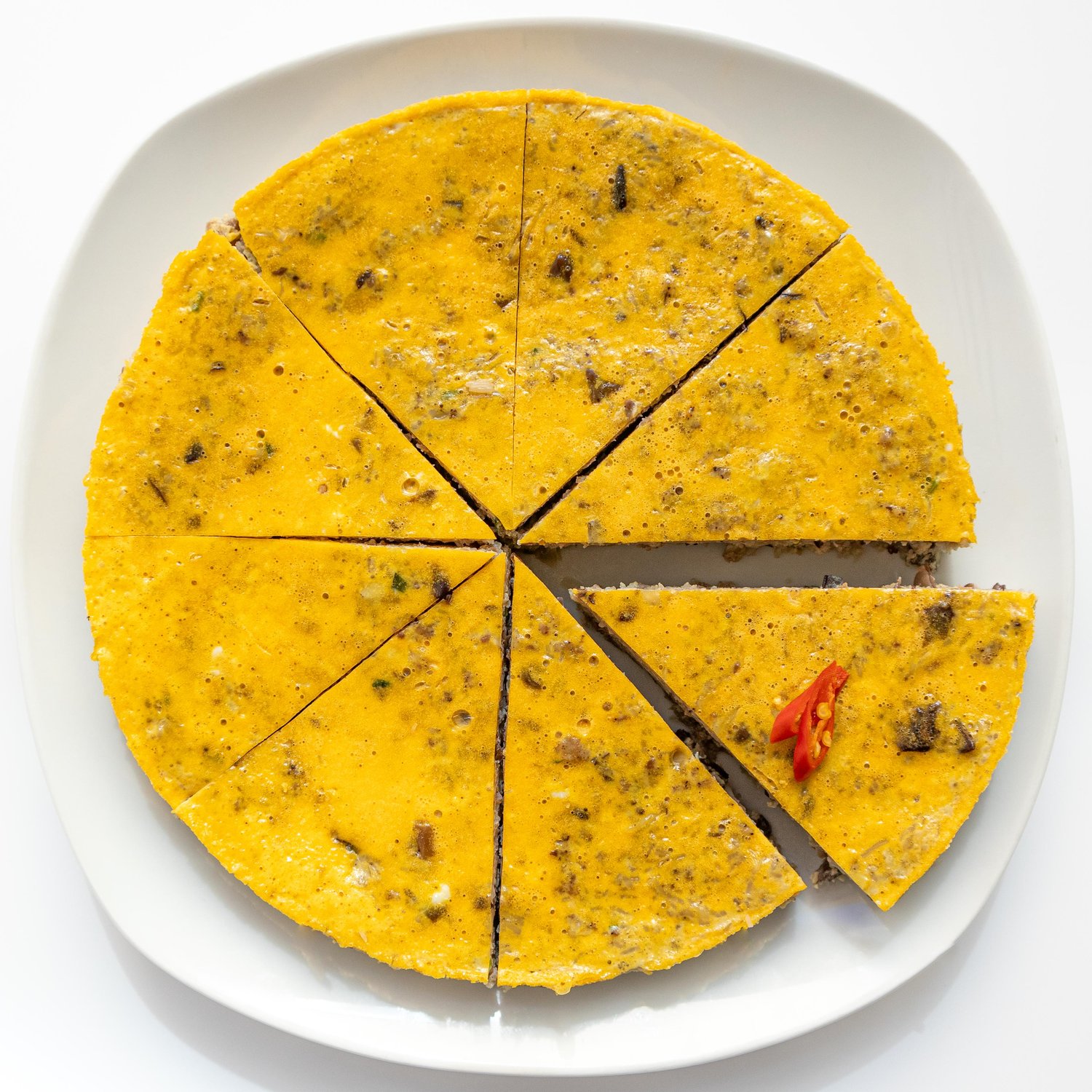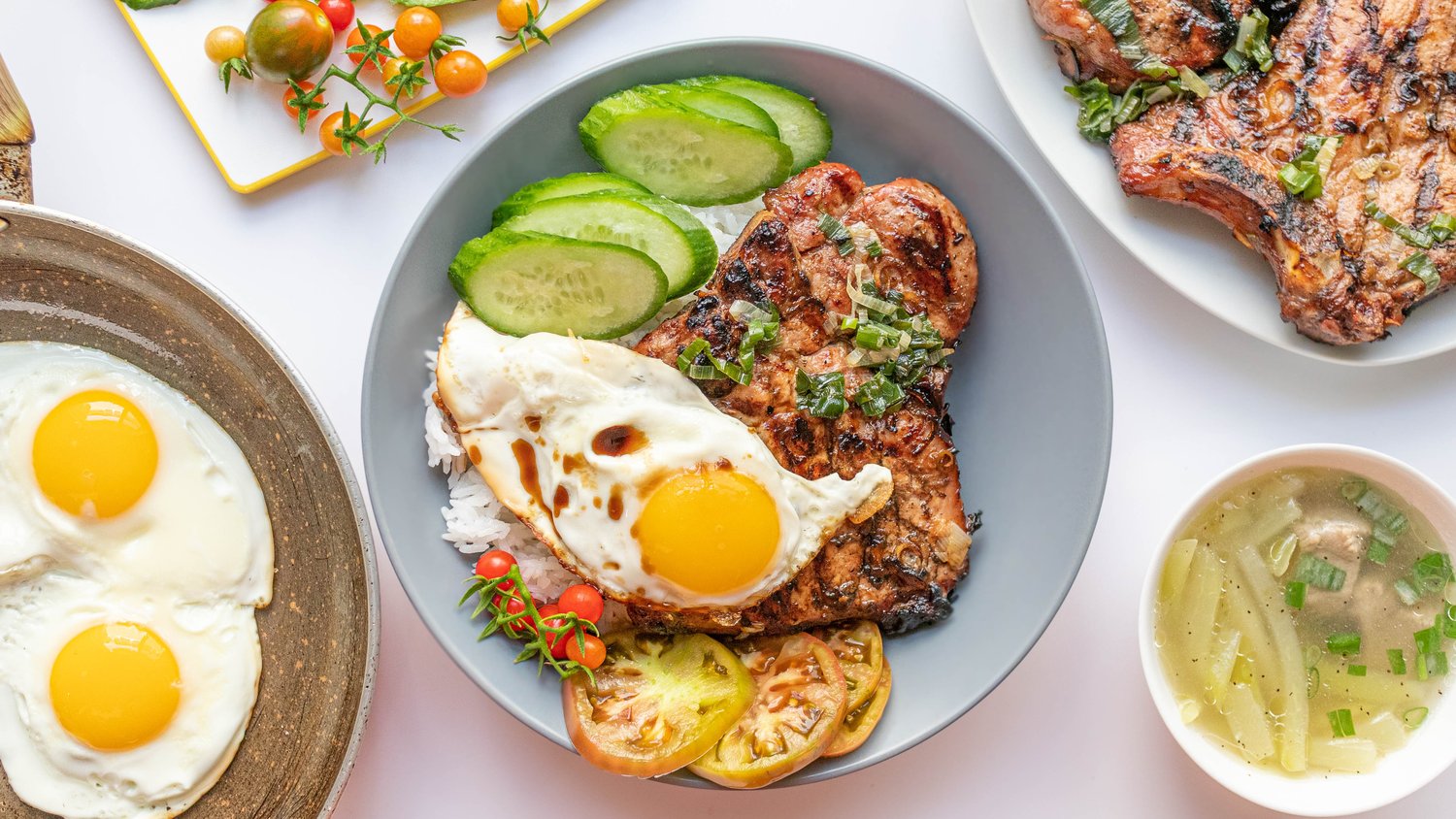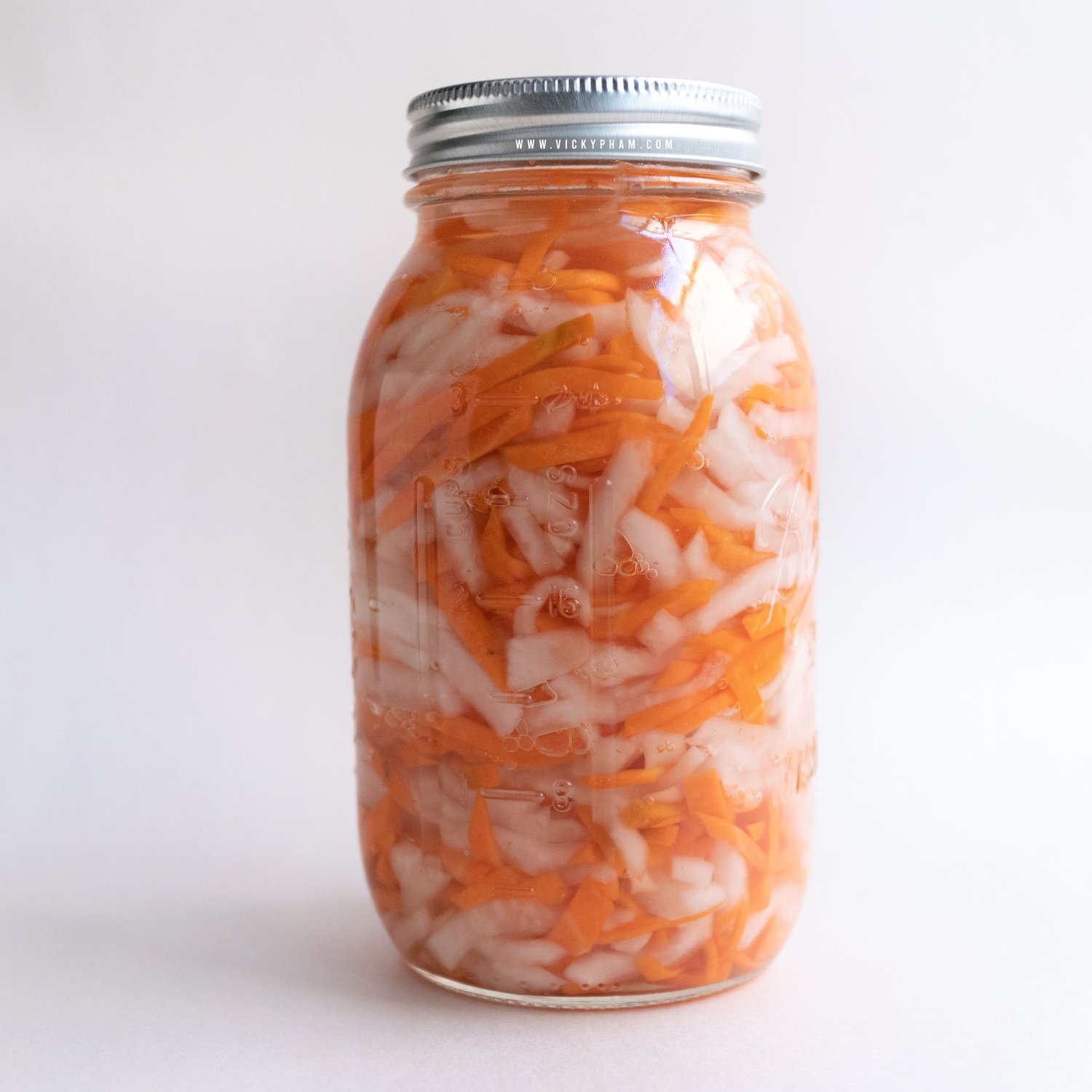Vietnamese Shredded Pork Skin (Bì Heo)
This post contains affiliate links which we are compensated for if a purchase is made. Using links costs you nothing and helps to support the ongoing creation of content. • Jump to Recipe
Shredded pork skin and pork meat (Bì Heo) with Vietnamese famous broken rice dish (cơm tấm)
What is Bì Heo?
Bì heo is a combination of thinly sliced pork skin mixed with thinly sliced marinated pork meat, tossed together with the wonderful flavor and aroma of roasted rice powder.
This is a common side dish that you enjoy with either broken rice dishes (cơm tấm), noodle soups, or spring rolls.
You can find already made bì heo in Vietnamese deli/sandwich shops that sells bánh mì sandwiches. They are used as one of the sandwich options and often times you can find it sold separately.
Where to Find Shredded Pork Skin (Bì Tươi)
You can find pre-cooked and shredded pork skin at most Asian grocery stores.
Look for them in the freezer section. They come thinly sliced into strands. This saves a lot of time when making bì heo at home.
What a typical package of cooked sliced pork skin looks like at Asian grocery store in the freezer aisle
What You Will Need
To make bì heo at home, grab the following ingredients:
Pork Skin: You can’t have bì heo without pork skin. These resemble thin white noodles. We just need one bag for this recipe, which is typically 7 ounces. See above for picture.
Pork Meat: You can use pork loin, boneless pork chop, pork belly, or pork shoulder.
Trim off excess fat and keep them in large pieces for easier slicing once cooked.
Slicing the pork is the most time consuming part in making bì heo so keep that in mind.
Aromatics for Pork Marinade: We will be using fresh shallot and garlic.
Seasonings for Pork Marinade:
Neutral Oil : I’m using vegetable oil to pan fry the pork.
Coconut Water or Plain Water: This liquid is used to braise the pork meat. The liquid reduces to a glaze that will coat the meat.
Roasted Rice Powder: Roasted rice powder is available at Asian grocery stores. Look for them in the spice aisle in small baggies.
This is an essential ingredient and bi wouldn’t be the same without. Roasted rice powder coats the pork skin and pork meat, giving the dish its brown color and signature aroma and flavor.
You can also make your own by toasting rice grains in a dry skillet then break them into a powder with a mortar and pestle or food processor.
Fried Garlic: Fried garlic is another essential ingredient that gives bì heo the signature aroma.
You can get store-bought fried garlic or make your own by frying minced fresh garlic in oil until lightly brown.
Alternatively, you can also replace with dried granulated garlic or garlic powder.
An Important Message about Pork Skin
The most important thing to keep in mind when making bì heo is that the pork skin needs to be completely dry.
Any moisture will cause all the pork skin strands to clump together in one big mess. I know this personally.
It’s also very important to not apply heat to the pork skin. Any heat will cause it to soften which will give it moisture. When there’s moisture, we run into the same problem with clumping. I, again, know this by experience and had to chuck the whole thing and start over. It was no fun.
In short, keep the pork skin at room temperature or cold.
How to Make Bì Heo
Step 1: Marinate Pork
In a small bowl, mix together the pork marinade (shallot, garlic, chicken bouillon powder, oyster sauce, fish sauce, light soy sauce, sugar, and ground black pepper).
Adjust to taste if needed then marinate it with the pork for 15 minutes.
Marinated pork shoulder
Step 2: Prepare Pork Skin
To prep the pork skin, first add a little salt and rub it into the the pork skin. Rinse with cold water. The salt will help to remove any lingering porky smell. Rinse well and drain completely dry. Pat with paper towels to remove any excess moisture, if needed.
If it’s frozen, you can rinse with warm water to help it separate into individual strands, then rinse again with cold water to firm it up.
Cut the pork skin with a pair of kitchen scissors to make the long strands shorter. This will make it easier to prep and eat. Set aside.
Once defrosted and rinsed, this is what pork skin looks like straight out of the package
Step 3: Cook Pork
Heat oil in a large skillet over medium. Sear the marinated pork until brown on all sides, then add coconut juice or water. Cover and braise on a low simmer for about 10 minutes then uncover and continue braising until liquid has reduced into a glaze that coats the pork. When fork or chopstick can be pierced into the thickest part of the pork easily, meat is done.
Cooking the pork shoulder
Step 4: Slice Pork
Once cool enough to handle, slice into large, thin pieces, then again across the grain for strips. Slicing it as thin as the pork skin is more aesthetic but not required. Set aside to cool completely. Otherwise residual heat can make the skin moisten and cause clumping later.
Step 5: Toss it Together
Dust with roasted rice powder and fried garlic. Give it a good toss - and voilà, you're finished!
Transfer bì heo to a serving dish and serve immediately alongside your favorite Vietnamese dishes like broken rice dishes (cơm tấm), noodle soups, or spring rolls.
Tossing pork meat and pork skin with toasted rice powder and fried garlic
Make it in Advance
Make a large batch and simply keep on hand or frozen to be quickly accessible to incorporate in many Vietnamese dishes.
Storage and Serving
Bì heo can be stored in an airtight container in the refrigerator for up to 5 days or in the freezer for up to 3 months.
Because reheating may soften the pork skin and bring back moisture that can clump the pork skin, it's best to bring it to room temperature before serving.
More Recipes
If you enjoy this recipe, you might also enjoy these popular dishes:
Vietnamese Peanut Dipping Sauce for Spring Rolls (Tương Chấm Gỏi Cuốn)
Vietnamese Coconut Chicken Curry (Cà Ri Gà)
Easy Chinese-Style Soy Sauce Braised Pork Ribs
Vietnamese Beef Noodle Soup (Phở Bò)

Vietnamese Shredded Pork Skin (Bì Heo)
Ingredients
Instructions
- Marinate Pork: In a small bowl, mix together the pork marinade (shallot, garlic, chicken bouillon powder, oyster sauce, fish sauce, light soy sauce, sugar, and ground black pepper). Adjust to taste if needed then marinate it with the pork for 15 minutes.
- Prepare the Pork Skin: Add a little salt and rub it into the the pork skin. Rinse with cold water. The salt will help to remove any lingering porky smell. Rinse well and drain completely dry. Pat with paper towels to remove any excess moisture if needed. If it’s frozen, you can rinse with warm water to help it separate into individual strands, then rinse again with cold water to firm it up. Cut the pork skin with a pair of kitchen scissors to make the pork skin shorter. This will make it easier to prep and eat. Set aside.
- Cook Pork: Heat oil in a large skillet over medium. Sear the marinated pork until brown on all sides, then add coconut juice or water. Cover and braise on a low simmer for about 10 minutes then uncover and continue braising until liquid has reduced into a glaze that coats the pork. When fork or chopstick can be pierced into the thickest part of the pork easily, meat is done.
- Slice Pork: Once cool enough to handle, slice pork into large, thin pieces, then again across the grain for strips. Slicing it as thin as the pork skin is more aesthetic but not required. Set aside to cool completely. Let cool completely - residual heat can make the skin moisten and cause clumping later.
- Toss it Together: Dust with roasted rice powder and fried garlic. Give it a good toss - and voilà, you're finished! Transfer bì heo to a serving dish and serve immediately alongside your favorite Vietnamese dishes like broken rice dishes (cơm tấm), noodle soups, or spring rolls.
Notes
- You can also use boneless pork chop, pork belly, or pork loin/tenderloin. Trim off excess fat and keep them in large pieces for easier slicing once cooked.
- You can also make your own roasted rice powder by toasting rice grains in a dry skillet then break them into a powder with a mortar and pestle or food processor.
Nutrition Facts
Calories
257Fat
13 gSat. Fat
4 gCarbs
12 gFiber
0 gNet carbs
12 gSugar
9 gProtein
22 gSodium
919 mgCholesterol
71 mgThe values provided should be considered estimates. Factors such as brands purchased, natural variations in fresh ingredients, etc. will change the nutritional information in any recipe. To obtain accurate nutritional information for a recipe, use your preferred nutrition calculator to determine nutritional information with the actual ingredients and quantities used.











